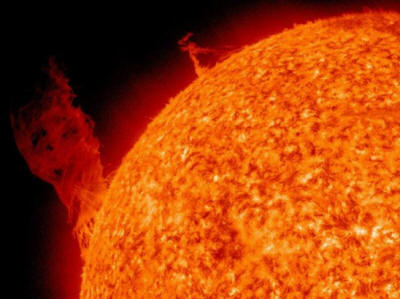|
by Stephen Smith from Thunderbolts Website
A plasma vortex spins cross the Sun Credit: Solar Dynamics Observatory/NASA
Conventional thinking suggests that the Sun accelerates charged particles into space in the same way that sound waves are amplified.
Eruptions in the photosphere travel
outward through “acoustical wave-guides,” known as
magnetic flux
tubes. Structures called
spicules rise thousands of kilometers above
the photosphere and carry the hot gas with them.
Sunspots appear when electric discharges penetrate the
photosphere, allowing electric current to flow into its depths.
Electromagnetic flux tubes expose the Sun’s cooler interior. The
idea of acoustic heat transfer from the core cannot be supported by
any observations of the Sun.
As a
recent press
release states, they are drawn 300,000 kilometers below the surface,
where they are re-magnetized by the “solar dynamo.” The sunspots
become buoyant in the plasma flow, rising back up to the photosphere
to start a new solar cycle.
Laboratory experiments with a
positively
charged sphere show that a plasma torus forms above its equator.
Electric discharges bridge the torus with the middle and lower
latitudes of the sphere. Spicules are consistent with the principle
of “anode tufting,” a plasma discharge effect expected of a
positively charged
electric Sun.
Looking down into a sunspot means seeing
the rotating discharge columns in profile. Electric discharges in
plasma form rope-like, hollow tendrils. Since they are funnels of
plasma, their centers are darker, where convection cells would
appear darker at their edges.
Coronal arches and multiple loop structures connect sunspots and rise up to penetrate the chromosphere. The chromosphere is a plasma sheath, or double layer region of the Sun, where most of its electrical energy is contained.
When the current flowing into the Sun’s plasma sheath increases beyond a critical threshold it can trigger a sudden release of that energy, causing solar flares and enormous prominence eruptions:
When the current grows too strong, the plasma double layer is destroyed. That event interrupts the current flow and the stored electromagnetic energy is blasted into space as a solar flare.
Solar flares can therefore be thought of
as tremendous lightning bursts, discharging vast quantities of
matter at near relativistic speeds.
|

